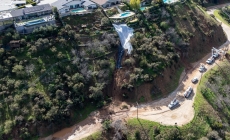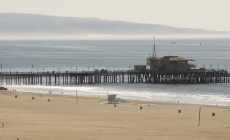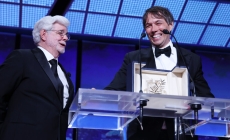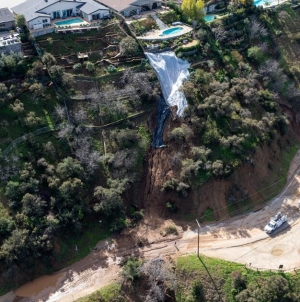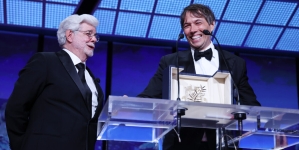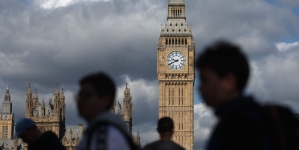-
Opinion: California has to conserve water. Why is Sacramento dragging its heels? - March 28, 2024
-
A portion of Mulholland Drive, damaged by mudslides in winter storms, reopens - May 26, 2024
-
‘Maybe You Don’t Want to Win’ - May 26, 2024
-
Donald Trump Putting Law Enforcement in Danger: Attorney - May 26, 2024
-
Avoid the waters of these 5 L.A. County beaches this holiday weekend, public health officials say - May 26, 2024
-
Bawdy Comedy ‘Anora’ Wins Palme d’Or at Cannes Film Festival - May 26, 2024
-
Map Shows Heat Wave Zone Spread Into Five New States - May 26, 2024
-
Azusa police arrest suspected slingshot-wielding vandal - May 25, 2024
-
Donald Trump Hammers Judge Ahead of Jury Instructions - May 25, 2024
-
Sometimes U.S. and U.K. Politics Seem in Lock Step. Not This Year. - May 25, 2024
Opinion: California has to conserve water. Why is Sacramento dragging its heels?

On the heels of two wet winters, it’s easy to forget how close some parts of California came to running out of water a few short years ago. But this climate amnesia will not help us prepare for the next inevitable drought. Since before the state’s founding, the boom-and-bust of drought and flood have shaped our landscapes. In this era of climate change, weather extremes are becoming more common and more severe.
The robust water supply of the 20th century is no longer reliable. California recently agreed to cut water imports from the Colorado River by 10% not out of altruism, but because we must. The Department of Water Resources projects that the Sierra snowpack — a major source of water for farms and cities — could be reduced by as much as 65% by the end of the century. More immediately, California’s water supply is projected to decrease by 10% as early as 2040. Now is the time to prepare for a drier, less predictable future.
That’s why we spent nearly two years crafting legislation designed to do just that. We developed and shepherded the passage of two water conservation bills, Senate Bill 606 and Assembly Bill 1668, back in 2018. That legislation established a framework for creating long-term water-use efficiency standards for urban water suppliers that would govern indoor use, allowable water loss and outdoor use. The State Water Resources Control Board was charged with crafting the standards, working with the Department of Water Resources, businesses, environmental advocates and water utilities.
The process has required compromise all around. The standards for indoor use and allowable water loss were hammered out by 2023, but there has been a delay in finalizing the outdoor-use efficiency standards.
In large part because of that delay, the water board is about to trample the hard-won work that’s been done so far by allowing water utilities until 2035 or later to implement meaningful reductions. Under the current proposal, according to the board’s “provisional data,” 72% of Californians won’t have to save any additional water for another 10 years. But climate change isn’t waiting another decade to deepen its impacts. We need to stretch every drop from years when we get enough snow, as in this year, to carry us through the hot, dry periods to come.
SB 606 and AB 1668 and the standards that are being set won’t tell Californians how many times a week to shower or when they can water their yards. The framework creates “water budgets” for water suppliers — customized bottom lines based on population, water use in the service area, climate and the like — that the utilities and their customers can meet in ways that best fit their individual situations.
The goal of the budgets is to keep faucets flowing and water bills in check by pushing the utilities to invest in efficiency. That means replacing aging infrastructure to reduce wasteful leaks. It means incentivizing users to replace their lawns with California-friendly plants and to update their washing machines, toilets and faucets — all of which utilities can promote through rebates or even by doing the work themselves for households that can’t afford to pay upfront and wait for reimbursement.
Because the water board’s latest plan for implementing efficiency standards has such an extended timeline, water will inevitably become even more expensive, including for low-income households and communities. While it is true that investing in efficiency costs money, it is the least expensive and fastest way to get our demand for water into balance with increasingly limited supplies. It can give us all more flexibility, so we’re not facing mandatory cutbacks or situations where households worry they can’t afford water for basic needs.
Dollars not invested in improved efficiency will not be saved; they will instead have to be spent on more expensive options to achieve water sustainability, such as wastewater recycling and desalination plants. These are important tools essential to improving our water security, but they take time to build. Whether a water utility is promoting efficiency or recycling wastewater into drinking water, those costs ultimately get passed on to customers. Viewed in this full context, prioritizing investments in efficiency is raging commonsense.
It is essential for state leaders to create durable and responsible policy rooted in today’s climate reality. Our water supply is under intense pressure.
It’s not too late to turn this ship around. We can end the delay in implementing our conservation legislation by reverting to earlier proposed standards for outdoor water use in urban areas and finally holding utilities to appropriate water budgets.
The state water board must do what is right for our communities, our environment and our future: Make efficiency the top priority. Don’t leave Californians waiting decades longer to make conservation a way of life.
Robert Hertzberg is a former speaker of the Assembly and former majority leader of the state Senate. Assembly member Laura Friedman (D-Glendale) is running to replace Adam Schiff in the U.S. House of Representatives.
Source link



